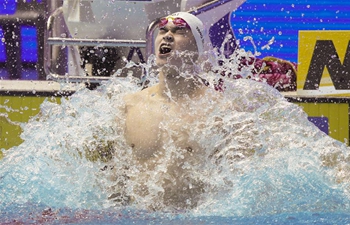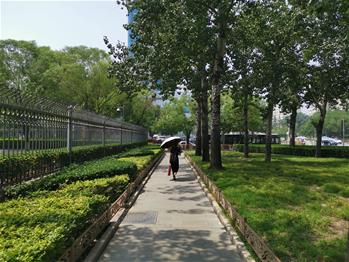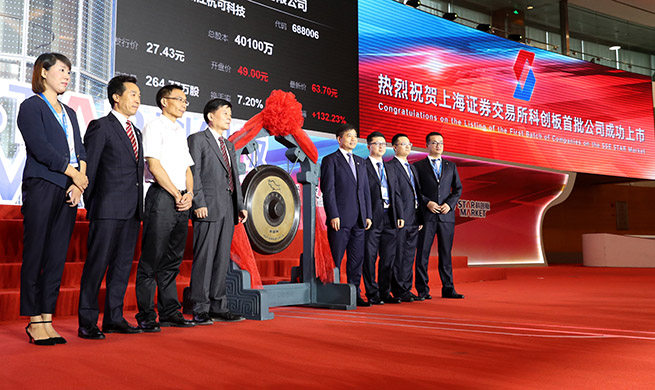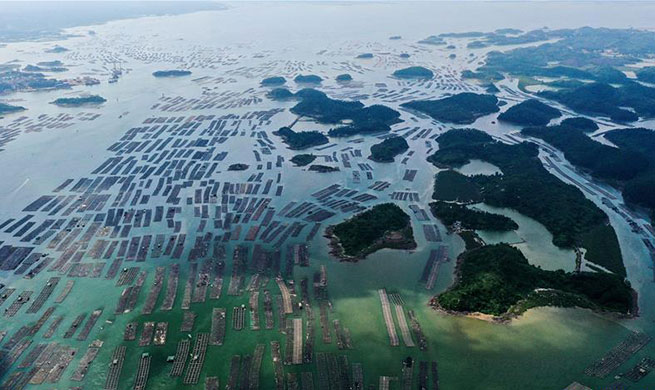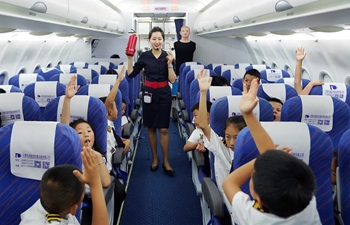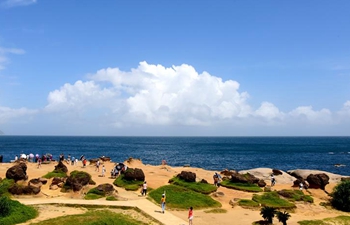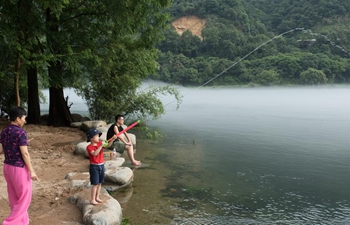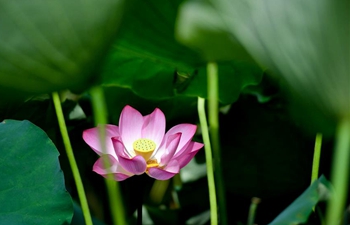BEIJING, July 22 (Xinhua) -- An international team of researchers have developed a low-cost and hand-powered water disinfection system based on triboelectric nanogenerator technology.
In recent years, water disinfection at the point of use (POU) has become a focus of both academia and industry. Compared with traditional centralized water disinfection approaches, POU devices treat water at the point of consumption. Researchers have been trying to lessen their cost and dependence on electricity.
In 2012, the triboelectric nanogenerator (TENG) was developed as a new power-generation technology to convert various mechanical energy from the living environment into electricity, based on the coupling between the triboelectric effect and electrostatic induction.
In the new study, researchers from Tsinghua University, Beijing Institute of Nanoenergy and Nanosystems, Chinese Academy of Sciences and Georgia Institute of Technology in the United States proposed the concept of TriboPump, including a water pump, a disinfection device and a disk triboelectric nanogenerator (D-TENG) as the power source.
According to the research paper published in the journal Advanced Energy Materials, a design incorporating a coaxial mechanical structure integrated into a 3D-printed support with a well-matched gear ratio enables the D-TENG and water pump to be driven by the same rotating mechanical stimuli, such as hand power, while achieving different rotating speeds.
Meanwhile, the D-TENG can adapt to different water qualities without additional power management circuits.
The researchers said the TriboPump water disinfection system can be effectively operated by hand power and cost as low as 10 U.S. dollars for a two-year service for a single family.
It provides a feasible one-stop and cost-efficient solution for POU water pumping and disinfection, and is especially suitable for rural areas or locations hit by unexpected disasters without direct access to a power supply, they said.
According to the World Health Organization's report in 2017, one out of nine people in the world have no direct access to clean water due to pathogen contamination. Access is further limited by factors including secondary contamination during water distribution, natural disasters, war and poverty.




